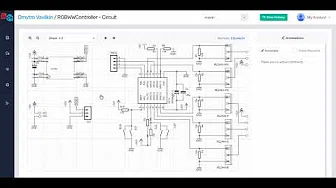Files
-
design / schematics / ArmControl / AGSE_BBB_cape.brd
-
design / schematics / ArmControl / AGSE_BBB_cape.sch
-
design / schematics / ArmControl / AGSE_Motor_Controller.brd
-
design / schematics / ArmControl / AGSE_Motor_Controller.sch
-
design / schematics / ArmControl / jetsonSerialBuffer.brd
-
design / schematics / ArmControl / jetsonSerialBuffer.sch
-
design / schematics / ArmControl / jetsonToServoBuffer.sch
-
design / schematics / PayloadBay / PayloadBay.brd
-
design / schematics / PayloadBay / PayloadBay.sch
Article.mdAGSE Article:
For this year's NASA Student Launch Competition, we are developing autonomous ground support equipment (AGSE) designed to operate on the surface of Mars to capture a scientific sample and insert it into a rocket for delivery back to Earth. This year's competition has the AGSE detect and capture the sample, and then insert the sample into the team's rocket. For this challenge, we are developing a robotic crane-based system with a powerful control processor that can handle (1) the detection of the sample and the rocket from camera video, (2) the sensing and motor control of the robotics, and (3) the path planning to maneuver the robotic gripper at the end of the crane from its sensed position to the sample's and rocket's detected positions. Because this system is being designed with the criteria of a (simulated) mission to Mars, we are designing the system such that it (1) minimizes the size and mass while maximizing operational range, (2) minimizes power consumption while maximizing functionality, and (3) is capable of detecting and mitigating different failure scenarios autonomously. These design considerations are important because in the real system (a) we must send the AGSE to Mars, so its size and weight affect the cost of the mission, (b) batteries are heavy and solar power on Mars must be taken into account, and (c) such expensive remote systems cannot be easily fixed or replaced so any unrecoverable failure is wasted money and time which does not produce viable results. Finally, to keep the project manageable and decrease implementation complexity, we are designing the mechanical and software systems of the AGSE to be modular, which allows for individual system components to be worked on, tested, and upgraded independently of the rest of the system.








